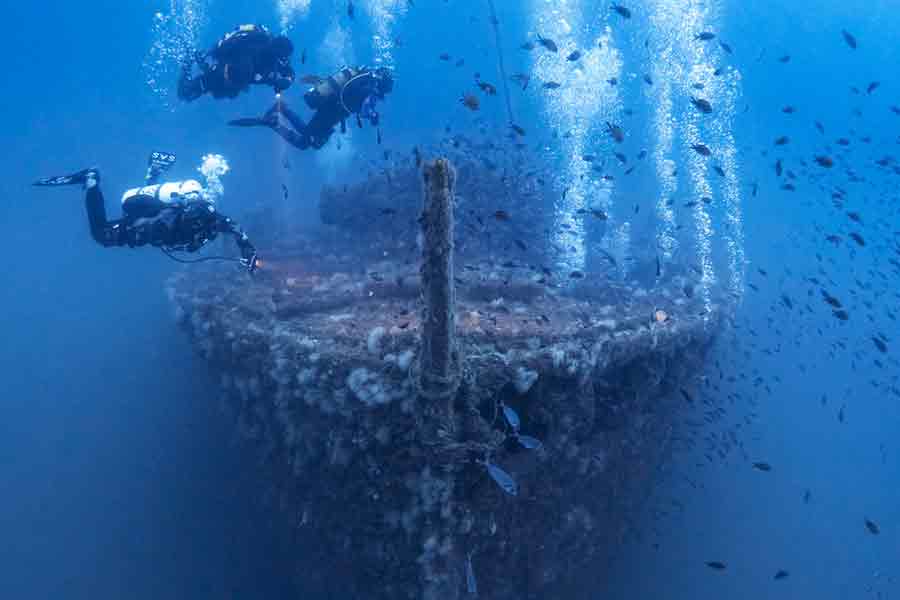
Many times, dismantling an out-of-service ship and selling the metal is not profitable. So, the ship becomes a real problem, left abandoned on a beach, rusting under the sun, spoiling the landscape, and leaking fuel and oil.
At that point, the decision is made to clean it from hydrocarbons, create large holes in it, sink it to the seabed, and solve the problem. Supporters of this method have ample arguments to defend it. Sandy bottoms near the coast lack algae and corals since these organisms need to cling to a rigid structure like rocks or the hull of a sunken ship. Shortly after sinking, the ship starts to be invaded by corals, anemones, and all kinds of plants. Later, fish arrive, finding countless caves to shelter from predator attacks. The fish that die inside the wreck decompose and generate detritus on the seabed, which becomes food for tube worms and other invertebrates that, in turn, become food for more fish.
The abundance of food gathered in a delimited area, the large available living space, and the ease of encounters between males and females allow for the birth of more fish. They, in turn, attract predators that will roam around the shipwreck, hoping to catch an unwary resident. A shipwreck on a sandy seabed becomes, in a short time, an oasis of life.
Moreover, if the ship sinks near the coast, it becomes a tourist attraction, attracting divers from all over the world and benefiting the local economy through hotel and restaurant occupancy. On the other hand, the more conservationist trend refuses to fill the ocean floor with human scrap, even if it favors species reproduction, arguing that such processes should occur naturally. They argue that humans should seek solutions to our problems without harming the sea.
Nevertheless, humans cannot avoid impacting the environment because we are part of it. As animals that have evolved significantly, we produce waste, and it is our duty to find the best way to eliminate or recycle it. In my personal opinion, the ship depicted in this chapter is much more useful now, sunk on the seabed and turned into a haven for life, than when it sailed, symbolizing the pride of a belligerent country’s war fleet.
«You cannot defend what you do not love, and you cannot love what you do not know.»

